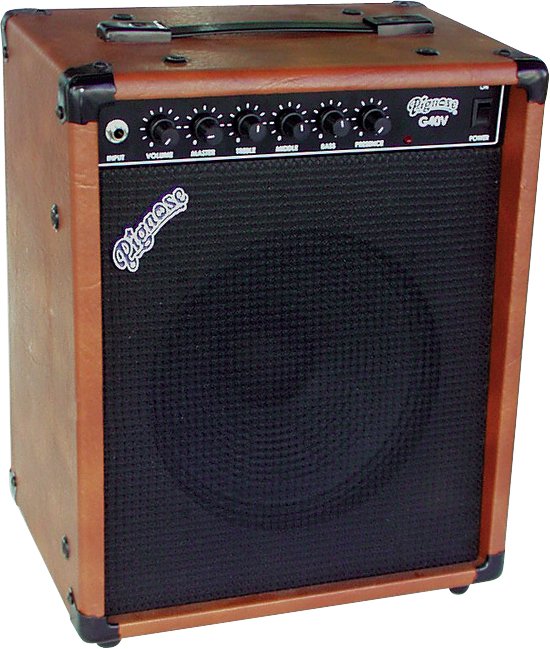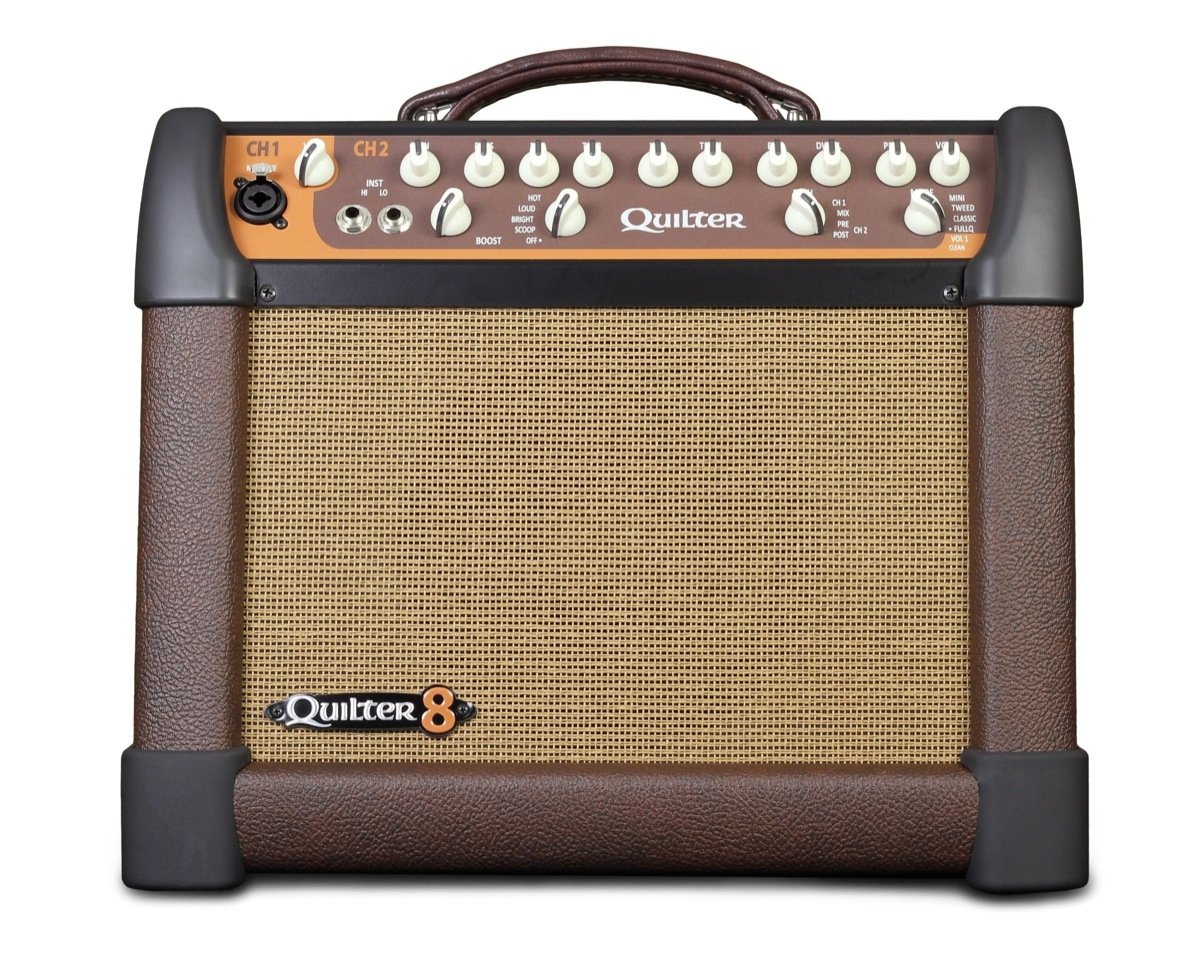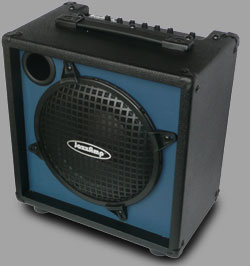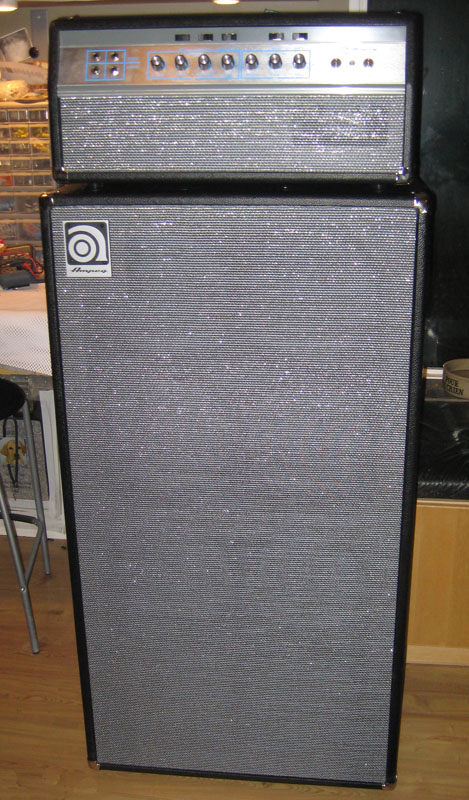 |
| Fender Acoustic Electric Telecaster |
These are the Stratocaster/Telecaster-shaped instruments with thin bodies and piezo pickups in the acoustic style bridges.
They play like an electric guitar (when set up properly) but sound like an acoustic guitar.
These guitars all had an asymmetrical soundholes, bolt-on maple Kramer necks with rosewood fretboards.
The bridge and saddle were acoustic style, but did not have pins. Instead the strings were anchored to the bridge.
A passive piezo transducer was mounted under the saddle and the controls for volume and tone were on the upper side. Later models came with a 3 band EQ/volume control mounted on the upper bout.
The KFS-1 and FKT-1 had fancy shark’s tooth fret markers, while the KFS-2 and KFT-2 has rosewood fretboards with dot position markers. The KFB-1 came with a rosewood fretboard and rectangular position markers. The KFB-2 came with a rosewood fretboard and dot inlays. Many had the well-known Kramer banana headstock.
There was also a Strat-shaped 12 string model, the KFS-12 with shark tooth inlays on its rosewood fretboard. And the KFX model was an Explorer shaped guitar with shark-tooth inlays on rosewood. The #1, #12 and KFX all came with bound necks, while the #2 models were not bound. Later in production #2 models came with diamond position markers.
Brand new Kramer Ferrington’s sold for $550 to $700.
Kramer also offered the more expensive and better made Signature models. These were made of choice woods such as solid Sitka spruce tops. Bodies were made of Indian rosewood, Nato (mahogany) or American hard maple. The necks were bolt-on Kramer models, but not all were six-in-line and only one had the banana-style headstock.
These guitars were not based on existing guitar shapes, but were unique shapes designed by Ferrington. The SB model, named for Stephen Bishop, came with a rosewood fretboard with dot inlays. The body had a single Venetian cutaway. The soundhole was shaped somewhat like an offset guitar-pick. The headstock was 3-on-a-side. Bodies could be ordered in Maple, the least expensive, mahogany or rosewood, the most expensive.
The bridge and saddles were similar on all models. It was a rectangular understated bridge and there is a piezo pickup under the saddle which went to a 4 band EQ and volume control.
The RT model, named for Richard Thompson, was also an original Ferrington design. Once again the rosewood fretboard had dot inlays. The soundhole was an offset oval. The six-on-a-side headstock was a unique design.
The double cutaway solid Sitka spruce top body was offset, think Fender Jaguar. It had a small point on the upper side of the lower bout. Electronics and bridge were similar. The RT came with the same body choices and was more expensive.
The DS model, named for Danny Steve Ferrington, was similar in shape to the SB model, in fact the only thing different was the headstock, which was the traditional six-on-a-side Kramer banana shaped style. It came in maple or rosewood.
The JS Model, named for JD Souther, also had the same body shape as the SB and similar accoutrements, but this guitar had a unique 3-on-a-side headstock that was reminiscent of the Danelectro Coke-bottle shape. It came in maple or rosewood.
The SB Model was named for Stephen Bishop and came with more of a traditional 3-on-a-side headstock
The nylon stringed model C came with a deeper body and a rosewood back matched up with a cedar top. The soundhole on this one was of an oval shape.
All of the Kramer Ferrington guitars had fairly deep bodies compared to similar Fender instruments. Kramer Ferringtons were made for a period of two years. After this Danny Ferrington moved to Los Angeles and opened a custom shop and Kramer guitars was begging to unravel.
Fender has been building its Telecoustic and Stratacoustic guitars back in 1991. This was an idea developed by luthier John Page, who gave us some great Fender guitars during his tenure with the company.
It was originally developed in Fender’s custom shop and came with a wooden body, but was very expensive. This was a transition period with Fender and about that time, Fender had no US production. Production was briefly moved to Japan.
 |
| Fender MIJ Telecoustic |
The deluxe model had a 2 piece spruce top, mahogany back, pearl button tuners, maple neck with a rosewood fretboard with dot inlays and an ebony bridge.
 |
| Fender MIJ Telecoustic |
Acoustisonic Tele |
However the guitars that we are most familiar with are the Fender standard Telecoustic and Stratacoustic models. These guitars feature the standard Fender shape, but with an acoustic style bridge and compensated saddle that contains a piezo pickup combined with Fender’s B-3TN unit. The tops are made of laminated spruce. The neck is maple with a rosewood fretboard. The inlays are dot style. The back and sides are molded fiberglass. Both instruments sell new for around $350.
The current lineup features Fishman active electronics with a built-in tuner. Older models came with Fender’s 3 band EQ/volume set up. The soundholes have traditionally had an oval shape.
Fender’s latest run includes the Telecoustic/Stratacoustic Plus model that adds a USB output to connect with computers, tablets and smart phones. This model sell new for $399.
The Fender Premier line has all the features of the standard and plus, but with a flame-maple top. It sells for $449.
These guitars have been around since the mid 1990’s and for awhile were assigned under the Squier logo. The bridge designs have changed. Fender has generally used a pinned bridge.
 In 2013 Fender introduced the Telecoustic Deluxe and the Stratacoustic Deluxe. This was an upgraded version of the standard guitar that came with a single coil neck pickup for electric sounds. The MRSP was a little high at $900, however the body was all wood. The top was laminated spruce, the back and sides were laminated maple. The neck was a tradition Fender maple neck.
In 2013 Fender introduced the Telecoustic Deluxe and the Stratacoustic Deluxe. This was an upgraded version of the standard guitar that came with a single coil neck pickup for electric sounds. The MRSP was a little high at $900, however the body was all wood. The top was laminated spruce, the back and sides were laminated maple. The neck was a tradition Fender maple neck.They also produced the JZM model which was a Jazzmaster shaped acoustic electric. Some of these instruments came with a pickguard, while others did not. Like most of the line up it is made in China.
In the early 1990’s Fender introduced the Telecoustic HMT. (Heavy Metal Telecaster) This was part of their MIJ product. Several versions were produced. One was strung with steel strings and a SilverLace sensor pickup and a piezo in the bridge saddle. The controls were volume, TBX tone and pan and were mounted on the instruments top.
There was also a nylon string version with only the piezo. It had the volume and TBX tone.
Additionally a bass version was created in fretted and fretless versions. All models had a built-in preamp. The tops of the HMT series were spruce, the bodies were mahogany. The necks are maple with rosewood fretboards. They came in 3 color sunburst, black and natural finishes.
There are several versions of this guitar, so pay attention if you are interested. Versions, the TCY10TBS, and the TCY10BK both have spruce tops and are blue burst and black, respectively. These guitars have piezo pickups, Ibanez’s AEQ201 preamp with a 2 band graphic EQ and volume control.
The TCY20TRS and TCY20VV have similar electronic features, but both have a figured Ash body and an abalone rosette. The former has a red sunburst finish and the latter has a vintage violin finish.
The TCM50VBS does not have a piezo pickup. Instead it sports an AP2 Soundhole pickup, right above the guitars soundhole. This guitars top is figured ash and the back and sides are mahogany.
It comes with the Ibanez AEQ200M preamp with 2 band graphic EQ and volume and comes in a brown sunburst finish. The updated catalog also offers the TCM50NT with a natural finish.
These instruments are bargains and run from $200 to $300 new.
Ibanez also offers an upscale version of the Talman called the TCM60’s Plus. These have different color finishes and Ibanez gold die-cast tuners. The electronics are similar to the TCM50VBS and these also come with the AP2 Soundhole pickup.
The TCM60's Plus models seems to be aimed at the ladies, since most advertisers favor the pink-burst model.
The Talman series was initially introduced in 1994 as a solidbody electric and discontinued in this form around 1998. For a few years this guitar was offered with a “fotoflame” finish. Although this sounded exquisite, it was in actuality a picture of a wooden finish that was glued to the guitars top to give the appearance of wood. Ibanez was not the only company that offered fotoflame (or gravure flame) finishes. They did quit the process a long time ago.
Ibanez currently offers the Talman only as an acoustic/electric guitar.
.































































































